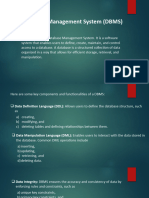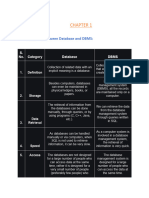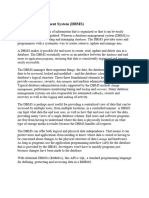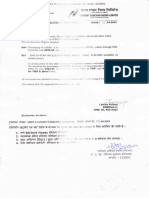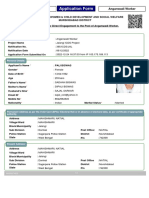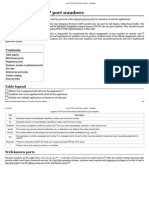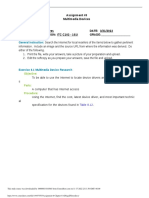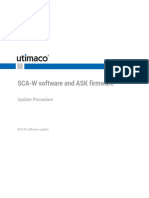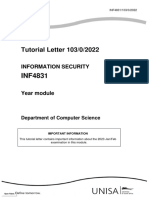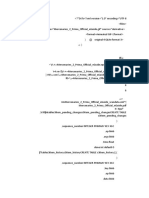0% found this document useful (0 votes)
31 views2 pagesDatabase Management
A Database Management System (DBMS) is software that enables the definition, creation, maintenance, and manipulation of databases, acting as an intermediary between users and data. Key features include Data Definition Language (DDL), Data Manipulation Language (DML), and mechanisms for data security, integrity, scalability, and performance. Types of DBMS include Relational, NoSQL, Object-Oriented, and Graph DBMS, each with its own advantages and disadvantages such as improved data integrity and security, but also increased complexity and costs.
Uploaded by
sunriseinstituteofapplied21Copyright
© © All Rights Reserved
We take content rights seriously. If you suspect this is your content, claim it here.
Available Formats
Download as PDF, TXT or read online on Scribd
0% found this document useful (0 votes)
31 views2 pagesDatabase Management
A Database Management System (DBMS) is software that enables the definition, creation, maintenance, and manipulation of databases, acting as an intermediary between users and data. Key features include Data Definition Language (DDL), Data Manipulation Language (DML), and mechanisms for data security, integrity, scalability, and performance. Types of DBMS include Relational, NoSQL, Object-Oriented, and Graph DBMS, each with its own advantages and disadvantages such as improved data integrity and security, but also increased complexity and costs.
Uploaded by
sunriseinstituteofapplied21Copyright
© © All Rights Reserved
We take content rights seriously. If you suspect this is your content, claim it here.
Available Formats
Download as PDF, TXT or read online on Scribd
/ 2




























